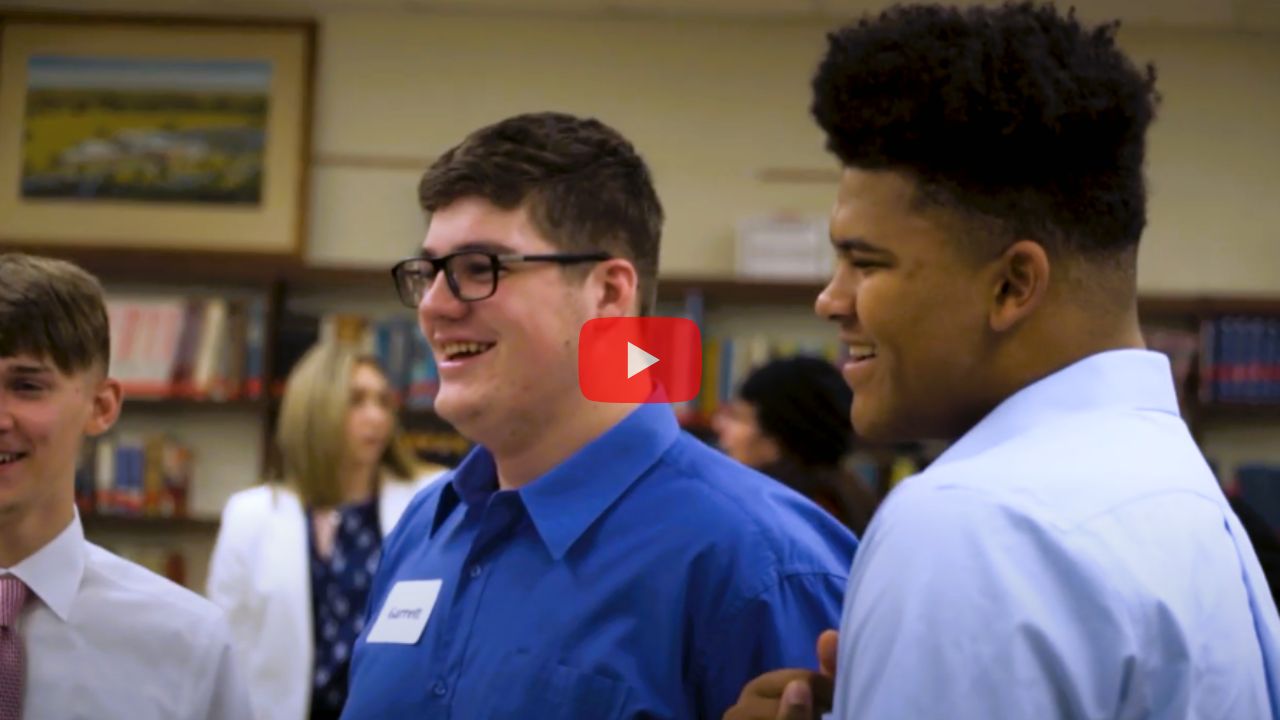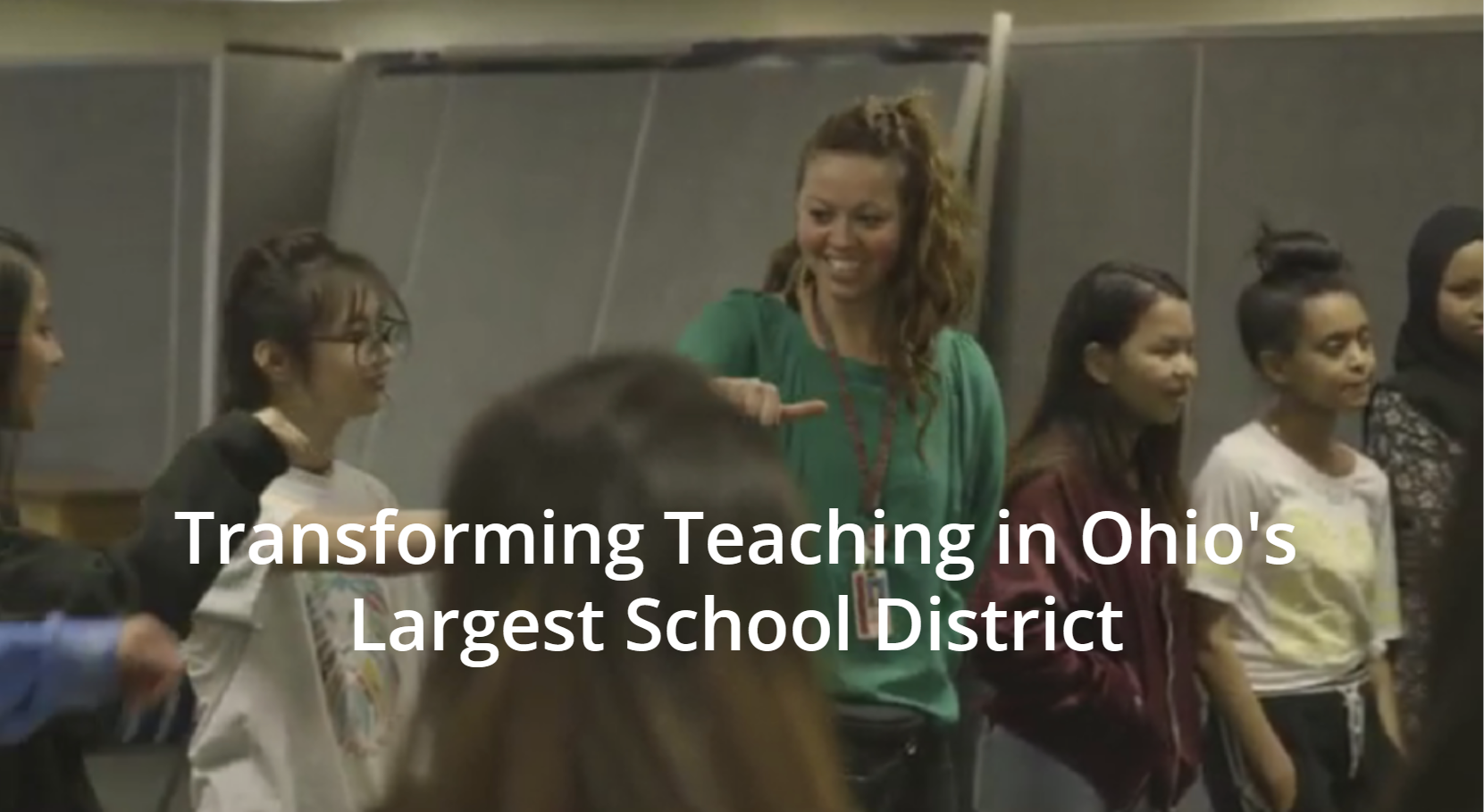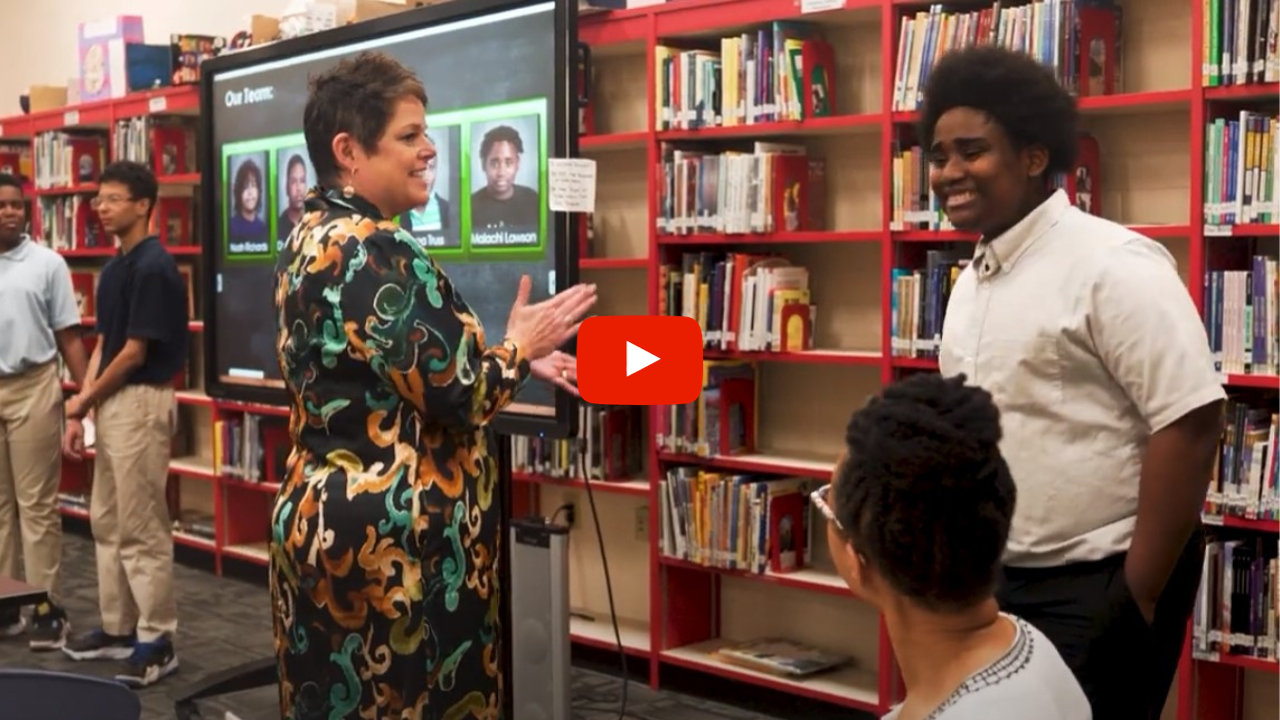Can a group of independent schools get colleges to accept a new kind of transcript without grades? In this episode, Scott Looney, Founder of the Mastery Transcript Consortium and Head of Hawken School discusses an initiative to bring important change to the college admissions process.
Do School Better: A Podcast for People Who Want to Transform Education - Listen to more episodes here
Doris: Hi Scott!
Scott: Hey Doris.
Doris: I’m so excited about this podcast because you and I have been partners in crime for six years. And just for the listeners to hear, I usually say, can you tell us about yourself. I’m going to be obnoxious and tell everybody about you. Scott Looney is the Head of Hawken School which is a phenomenal progressive preschool through 12, day school in Cleveland, Ohio that I have had the great privilege to be part of for these last six years and Scott has been Head of Hawken School for 11 years and came into this school . Hawken was the really first progressive private school in Cleveland, Ohio starting in 1915. And over the course of its hundred year history, in the 70’s and 80’s and 90’s it kind of lost its way a little bit. Actually, a lot and really became a bit of a slave to AP’s and standardized tests and lost its way. And the board had the courage and bravery and foresight to bring Scott Looney into Hawken to bring it back to its progressive roots and take it into the future.
Scott had been leading the school and had created the new vision for the school and had been here for five years when he had the courage or maybe stupidity, I don’t know. It depends on the day. To bring me in as the associate head of the school and partner with him to make the vision real. I had been here about a month as associate head running the academic side of Hawken and partnering with Scott when…and some of you may have heard me talk about this earlier…when Scott you asked me, “Hey with your background, do you want to also create an Entrepreneurship program?” Six years later, of course, all this has happened and what we’re here to talk about today is a really exciting thing that actually, Scott, I’d love to talk a little bit about where it came from before we get into discussing this extraordinary brave new mission that you’re leading and that is becoming not only a national movement but I think is soon going to become an international movement. Anyways, enough of me.
Scott: Thanks, Doris. I’m excited to talk about the Mastery Transcript Consortium, and we’ve picked up schools not just in the US but kind of all over the world at this point.
Doris: Look where we are. From where we started. Let’s talk about how this even started, where you came up with it.
Scott: Sure. Well as you know, we six years ago, started trying to deconstruct school and replace it with learning at Hawken and it became pretty clear that there were a number of obstacles in the way and we’ve spent time over the last few years trying to clear those out of the way. At one point…
Doris: We look at us, we’re both 32 years old and look at us, what we’ve been through together.
Scott: Well, your maths not great but what we’re really trying to figure out is what are the things in the way of learning and some of the constructs of school are those things. So it became clear that to try to incrementally change a 100-year-old prep school was going to take too long for either of our levels of patience. So about four years ago, we got permission from the board of trustees and really the faculty to create a school within a school, an alternative high school track that was based on premises that made more sense to us like no grades, no grade levels, all interdisciplinary learning, all real-world applied learning and the entrepreneurship program was the genesis of all that and really the best exemplar of what it ought to look like. But as you found out teaching Entrepreneurship, and we found out as we thought about what would a whole high school track look like, grades and the traditional transcript were a huge impediment.
Doris: It’s one thing to create it, it’s another thing to teach it. And having done both…
Scott: Right, and as you said many times to me, issuing grades at the back end of a completely team based experiential portfolio based is completely counter to the whole idea. So we thought we needed a new transcript for our little lab school and we just figured we would go find one. We figured there are 37 thousand high schools in the United States, there has to be somebody out there who’s got one similar to what we want.
Doris: We actually really did believe that. We’re not that special.
Scott: Hey no, we don’t want to reinvent the wheel. If there’s a good example out there, we’ll just borrow it, adjust and modify it, and move on our way.
Doris: So we don’t have to have the grade transcript.

Scott: Then we ran into two big problems. One, the transcript we were looking for doesn’t exist. We hired Hanover research to do a national survey of transcripting practices and they came back and said, “Yeah, there are a handful, only about one percent, of all the high schools in the United States don’t have grades but even those high schools mostly issue transcripts with content labeled courses and Carnegie units, a time stamp for how long a kid sat somewhere.” We didn’t believe them, we made them do it again. They went back out, looked around and said, “No really, what your modeling doesn’t exist.” So we were the little engine that could and we figured, gosh darn it we will just create our own. So we started creating transcript models. I’m fortunate because of my background I know a lot of college admission deans. So I started running them by deans of admission at pretty selective colleges and they all had the exact same reaction, which is, they understood why we were doing it, they thought it was a neat model. They said, ” Wow, you’d really produce interesting kids if you did this. We said thank you, that’s the goal. And then they said, “Would you be the only high school with this type of transcript?” Yeah, we created it so yeah we would be using it. They said, “Yeah we’re going to hate it then”. I said, “Do tell, can you tell me why you’re going to hate it?” Well Scott, if your transcript is unique, if you have a one of a kind transcript, we have thousands of applications we have to read, we have very little time to read them. I don’t have time to stop and train my admission people in real time. And so we kind of gave up for a little while and thought okay, I guess we can’t create our own transcript.
Doris: You and I were still going ahead, here’s how our lab schools going to work and it’s going to be based on all the methods in Entre class and the portfolio based assessment and all of this great stuff and we’re gonna slap a grade on it.
Scott: Yeah, because we figured that was our only choice. Then I had a conversation with one of the same deans who I had shown this to before and I said, “By chance, what if I brought 25 other prep schools with me and it wasn’t just Hawken having a unique transcript?” And that person said the same thing that five or six other deans told me which was, “Oh, that would be completely different. If you were doing this as a group. If there was a group of schools doing it, well then I would take the time to train my readers on how to read these transcripts assuming the format wasn’t too nontraditional.” I said, okay I’ll be back, and that was the genesis of the Mastery Transcript. I spent about six months making phone calls to prep school administrators I knew who were friends talking them into coming to Cleveland for two days to have a conversation about what would it look like to create a group? We talked 30 schools into coming to Cleveland for a two-day kind of seminar workshop and we very intentionally showed them what was happening in the Entrepreneurship program.
Doris: Yes, they could see a model of what this could look like.
Scott: And they could hear from the kids what it felt like. Then we very strategically took them over to the Cleveland Clinic Case Western Reserve University Medical School, the Lerner Medical College, to meet with med students who were not getting grades, who were going through a completely project and problem-based medical school with no grades attached. And this is a very selective med school.
Doris: And no lectures.
Scott: No lectures. Very much what we were trying to build. And these were all kids who came out because Lerner is a pretty selective med school, these are all kids who went to the most selective universities with straight A averages. Listening to them talk about the difference of what it felt like to learn to ask for feedback from your supervisor position because you wanted to grow versus trying to figure out how to get an A was so compelling. Literally, it brought some of the people in the audience to tears. We had hoped that if we could get maybe 15 of the 30 schools that visited to join, we might have something, and 26 of the 30 joined immediately.
Doris: Which was crazy, and by the way, it was 29, 26 out of 29. Not that I’m counting or anything.
Scott: No, and ultimately 3 more joined so we got up to 29 out of 30. That was a sign that not only was this not a crazy idea but it was an idea whose time had come. You and I talk about this all the time, we go to all these conferences on innovation and learning. And it’s fun, and we always hear these wonderful keynote speakers who are on one hand inspiring because they’re usually brilliant but on the other hand they’re kind of depressing because more often than not they tell you about how messed up the system is.
Doris: Brilliantly tell you how messed up it is.
Scott: I came to this conference cause I knew that. They rarely ever given really concrete ways to fix the system. They might give you little tools you might do something back at your school but they don’t give you the how. We all know that the fundamental construct of school deserves being challenged right now but there aren’t vehicles by which we can challenge the whole system. The beauty of the Mastery Transcript Consortium is when you get 100 diverse and impressive prep schools to join forces and decide we want to do it this way, our partners will listen. They’ll say, “Oh, wow, these are pretty significant schools, schools with high academic standards. If they want to do this, there must be something to this.” So the idea can’t be dismissed out of hand when you have a group of schools that are renowned for their kind academic standards deciding they want to do something together.
Doris: We never ever thought of this as something for private schools or private schools kids. You and I from the first minute we met, we talked about wanting to use independent schools because we don’t have the restrictions public schools have. Not because we’re better but just we don’t have the restrictions so we feel a responsibility to serve as a laboratory. Really what you were talking about is we decided that we want to find a way to get the colleges to accept a non-grade transcript because that is the lever that has to open up.
Scott: In addition to a non-graded transcript, a transcript that actually shows the full shape of the child. It gives them institutional credit for things beyond content knowledge. 99% of the transcripts in the United States are content labeled courses with letter grades after them. But how do you give a kid credit for persistence, resilience, integrity, teamwork, leadership, or even what would be considered academic skills? Creative thinking, critical thinking, complex systems thinking, how do you give them a credit? We don’t currently do that.

Doris: Yes, and I want to take you back to the transcript for a minute. So there are all over the world now, schools and educators experimenting and developing phenomenal new models of learning. We’re not the only ones developing portfolio based skills and all this stuff. We’ve been experimenting, so have others. I want to take you back to something because you went kind of quickly. When you said, “Doris, I’m going to go ask my friends in the college admissions office”, and we were trying to build this lab school and you came back and you said, I literally remember you saying, “They said, ‘if its just Hawken, forget about it.’” And you also said, “And Doris, here’s what I’ve learned. There are three things they want out of this.” One of the things they said that you went over kind of quickly was the two minutes. As you think about what the Mastery Transcript brings, talk a minute about that.
Scott: Sure. The transcript now is a one-page piece of paper. So at the end of the day, the beginning of our transcript has to be on one page, we have to get everything on one page. Now it’s all live so if you want to click on it and dive into it like I described earlier you can. But on that one page, the content will be specific to the institution. If one school wants to give a credit for persistence and another school decides it’s not a credit they want to issue, that’s fine. If two schools want to give credits for persistence but they want to define it differently at their schools, that’s okay too. Because remember with the credit comes the definition, those colleges will see the definition if there is a difference. But, what can’t be different is the format of the transcript has to be the same so if its called a mastery transcript, we have a copyright of that, if it’s called a mastery transcript it will have a common format because we don’t want to make our friends in college admissions crazy.
Doris: Well, they won’t even do it right?
Scott: Right, if every mastery transcript has a unique layout. So we don’t have the layout created, we are going to create multiple models and we’re going to test them. But once we’re ready to go live, we’ll have a limited set if even a set of formats so that the college admissions officers will know that if they see a mastery transcript the format will look the same as every other master transcript. The content will be specific to the student and the school but the format will be the same and we think that we can hit that two minutes read mark.
Doris: Which isn’t our idea, the two minutes.
Scott: No, that’s the college admissions officers have said they give between 60 and 90 seconds to read. And I said, “Well, hey, for us would you give us an extra 30 seconds.” They’re like, “Sure, you’ve got two minutes.” But what’s also important is that a lot of admissions work that’s really tricky is done in the margins. The clearly admissible kids and the kids who are not admissible, those are done quickly at the front end of the process. The vast majority, I did admissions in my background, the vast majority of admission committee meetings are the kids in the middle. The kids that are are right on the acceptable/not acceptable line. Right between should we take this kid or should we wait list this kid? In those conversations you do want more information, you do want more evidence, you do want someone saying…
Doris: And they spend more time.
Scott: Someone saying, “You know what, we need more kids, we need better RA’s, our RA’s have been really disappointing. Well, then we need kids who got incredible social and emotional intelligence. Here’s a kid with a Mastery Transcript, look at their SEL’s, they’ve got all this stuff on the character side. That kid trumps this kid even though they have also comparable traditional academics.”
Doris: And we can look at if the kids mastered whatever it is, we can look at what they produced.
Scott: The other thing that happens too is that there’s usually someone in an admissions office who’s responsible for a region or for a group of kids. They’re usually one of the first readers. Those people fall in love with certain kids, they really want them to do well in the process. This gives them tools to advocate for their kids. If you’ve got a Mastery Transcript, if you and I are both admissions officers and I’ve got my 20 kids I really hope to get in and you’ve got your 20 kids you want to get in, there are only five seats. If my kids are all Mastery Transcript kids and yours are traditional transcripts, I’m going to win most of those overlaps because I can say, “Oh, look at 30 seconds of this kids video of the debate, this kid’s extraordinary.” And you’ve just got transcripts with letter grades and test scores.
Doris: I’ve got test scores and I’ve got probably for the wealthier kids, essays that somebody helped them write.
Scott: Exactly. And here’s the other advantage of the Mastery Transcript which we hope will happen. There are extraordinary kids who produce extraordinary work in schools that are not extraordinary. Those kids are trapped, and in this systems theoretically, they could submit their work to be assessed no only by their own school but by other assessing organizations that issues Mastery Transcripts including Hawken. Hawken could assess kids who don’t go to Hawken. And you wouldn’t necessarily get a diploma but you could get a transcript. It would allow kids in schools that have 600 kids for one councilor who don’t get highlighted very well to produce a transcript that not only shows what credits they earned but shows the work underneath it so that if a college admissions officer wants to say, “Hey, here’s a kid I really want to advocate for,” they’ve now got this whole set of data to go with it.
Doris: And from the kids perspective, if there’s a student from school X that a college maybe isn’t familiar with and another kid from school Y that a college is familiar with, some private school or who knows what, they’re able to see the work that the students produce.
Scott: That’s really critical because and it’s assessed work, it’s not just something that someone helped them write, right? So a lot of times when kids come from schools where the academic standards in school are questionable to the college, they see an A in English but for whatever reason, that college doesn’t think much of that A, they don’t think the school has high standards. They can now click on the kid’s essays and realize, wow, this kid really does write beautifully. Even though I wasn’t sure that A was legitimate, it doesn’t’ really matter because I can look right at the student work product and go this kid can write. That’s a really beautifully written essay. And it wasn’t the essay that they turned in that maybe someone helped him write, it was the thing that was turned in in his class.
Doris: For a kid who is for example, a kid who is an artist, maybe they’re a performance artist. Maybe they don’t show up well on any standard kind of test or even write essays well but now a college admissions officer can look at the video of them performing and see the kid.
Scott: And you use the word can, but they won’t have to. If they trust the transcript if they trust the credits, which we believe that they will over time, they can read it in under two minutes and move on. And so they kid may be automatically in or automatically out based on that alone but if they end up being one of those kids on the margins where they really have to think harder, they’re going to have this incredible set of evidence that they can use. And we will build into our software platform auditing tools so that they can say, show me every teacher comment about writing from this kid and it generates a report. Or show me everything about quantitative reasoning for this child and it pulls it out of the portfolio and presents it to them. This is not us trying to hide anything, quite the contrary, this is completely transparent. We’re showing you the whole child. But the most important part is we’re showing you the whole child, not just the narrowly academically defined child, we’re showing you the student character, we’re showing you the students skills not just their content knowledge.
Doris: And there are schools and even districts and networks of schools all over the world now that have actually for many years been developing these kinds of academic programs and have gone pretty far with portfolios and all these things. The Mastery Transcript doesn’t exist yet but together with all these folks we are going to design something that gives a vehicle to these guys.
Scott: I’m a big fan of Jim Caan’s work and one his premises is first two then what. The first thing you want to do is put a great team together and so bringing these schools together to start the conversation and then broadening it to our friends in parochial and public schools, that’s what you do first, you build your team first. And then the team will collectively with the guidance and hopefully resources of the MTC create a new paradigm, a new system. My favorite quote is a quote from Buckminster Fuller which is, “You can’t change reality, in order to change something you have to create a new reality. It makes the old reality obsolete”. Our current paradigm isn’t serving children well so we need to build a new paradigm. And the only way we can do that is to have smart people on the same team. So that’s what the MTC’s doing, is putting smart people on the same team.
Doris: Can you believe there are so many people wanting to do this?
Scott: Yeah. In fact, we’re over a hundred schools and climbing rapidly, we’ll be several hundred schools soon which will be pretty cool.
Doris: It’s exciting, thank you, Scott.
Scott: This is great, thanks, Doris.







